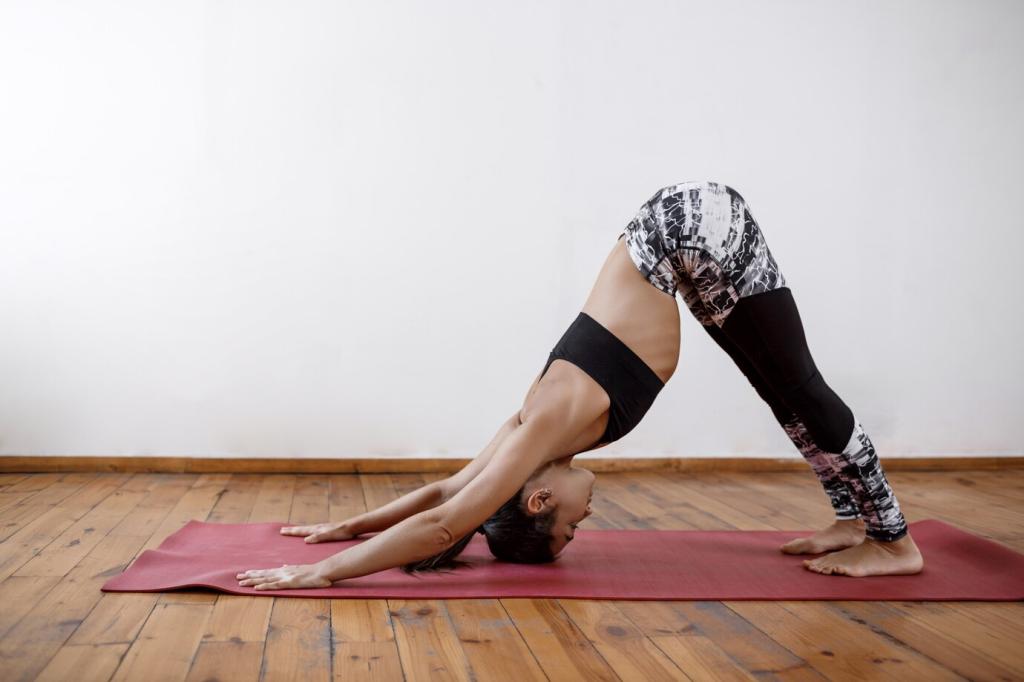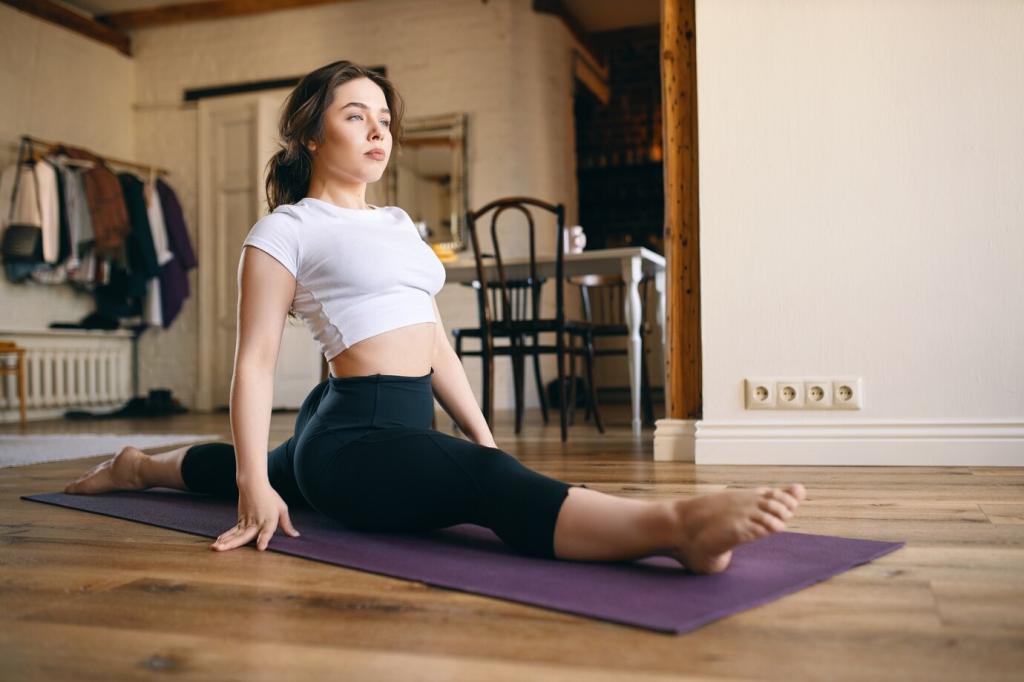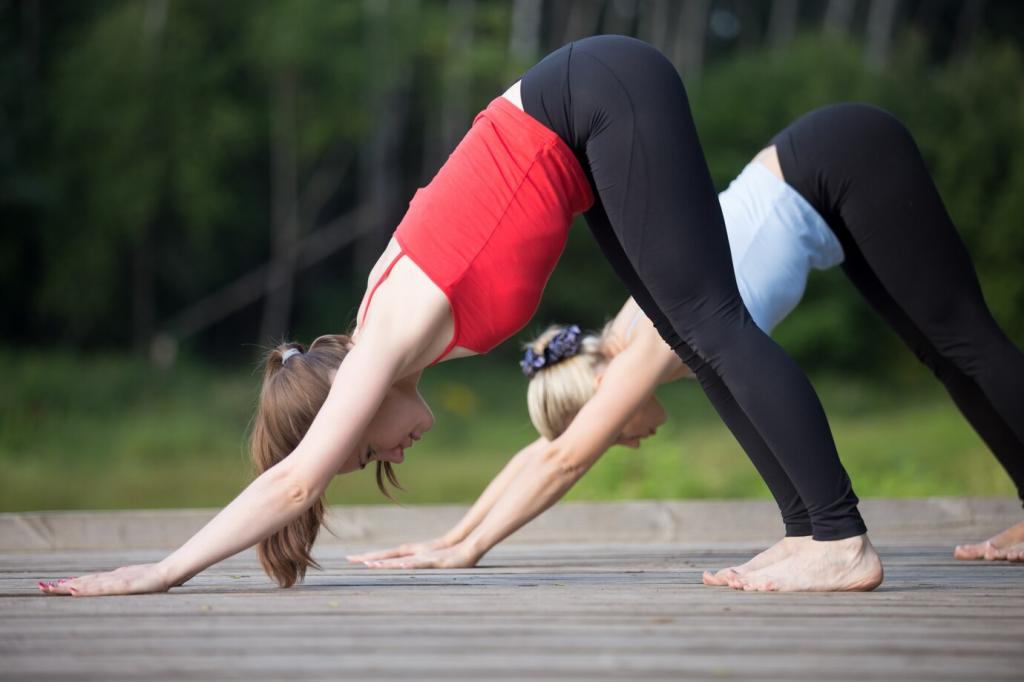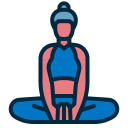Start Softly: Gentle Yoga Poses to Try First
Chosen theme: Gentle Yoga Poses to Try First. Begin with calm, beginner-friendly shapes that build trust in your body, steady your breath, and spark a sustainable practice. Join us, breathe slowly, and share your first gentle steps.
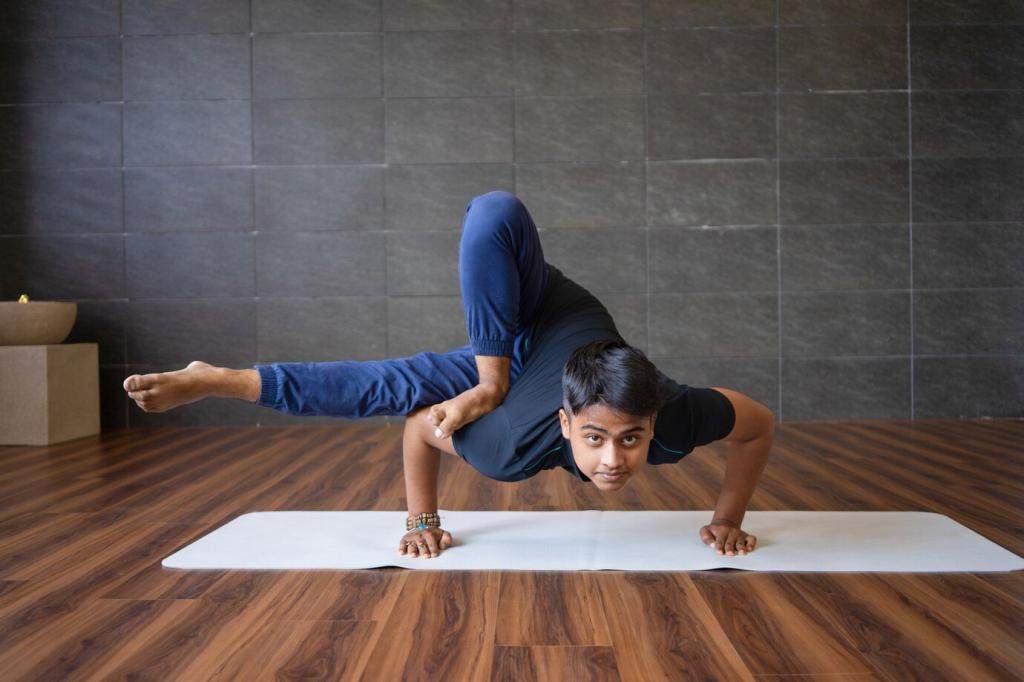
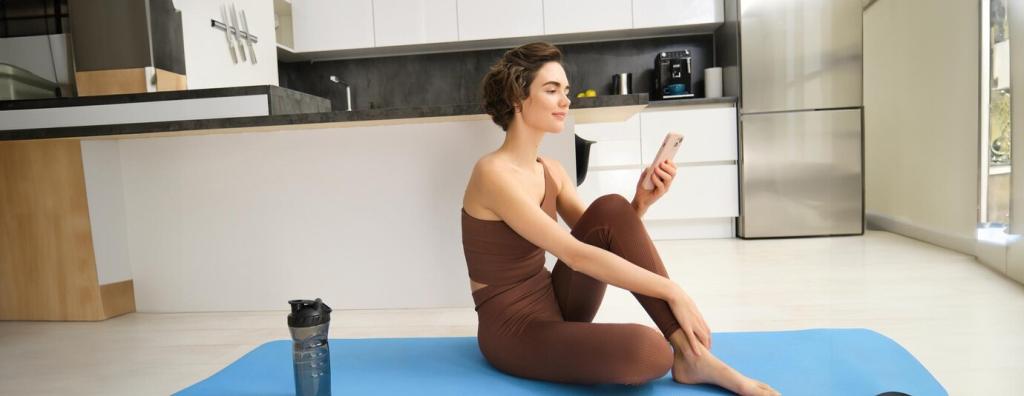
Confidence Through Kindness
When you start with gentle poses, you learn to listen instead of push. That listening becomes confidence, because every small success teaches your nervous system that movement can feel safe, nourishing, and genuinely supportive.
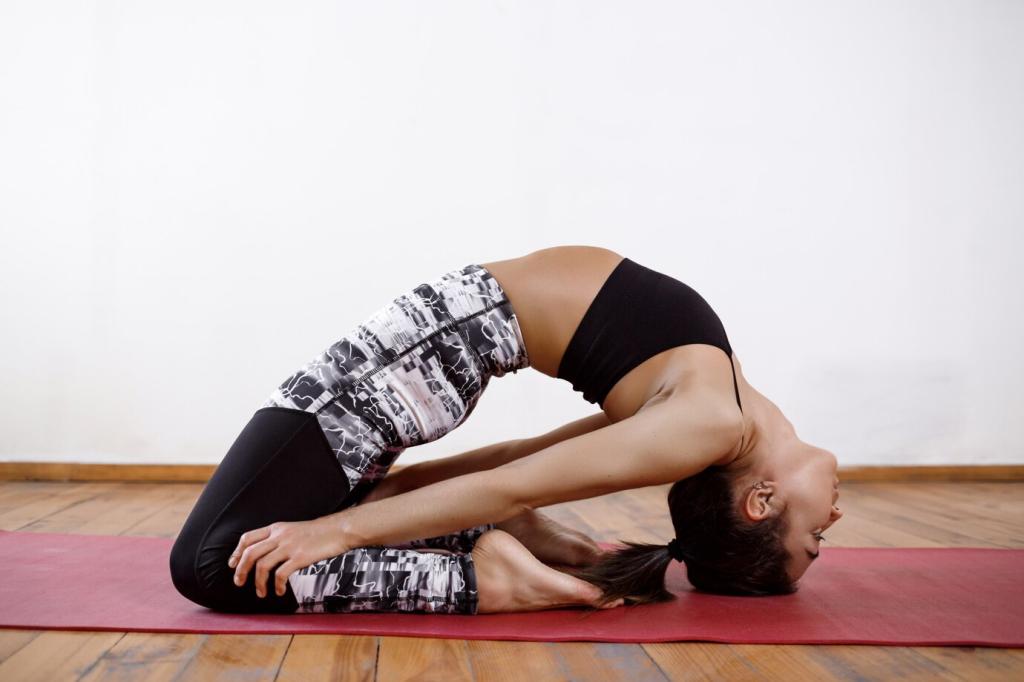
Safety as a Starting Line
Gentle options lower the risk of strain while helping you map your range of motion. You build strength gradually, notice limits sooner, and make adjustments early, so practice becomes protective instead of punishing or perfectionistic.

Small Wins, Big Momentum
One steady breath in Mountain, a soft stretch in Child’s Pose, and a calm spine in Cat–Cow accumulate. Those tiny victories compound, keeping motivation alive long after the excitement of day one fades.
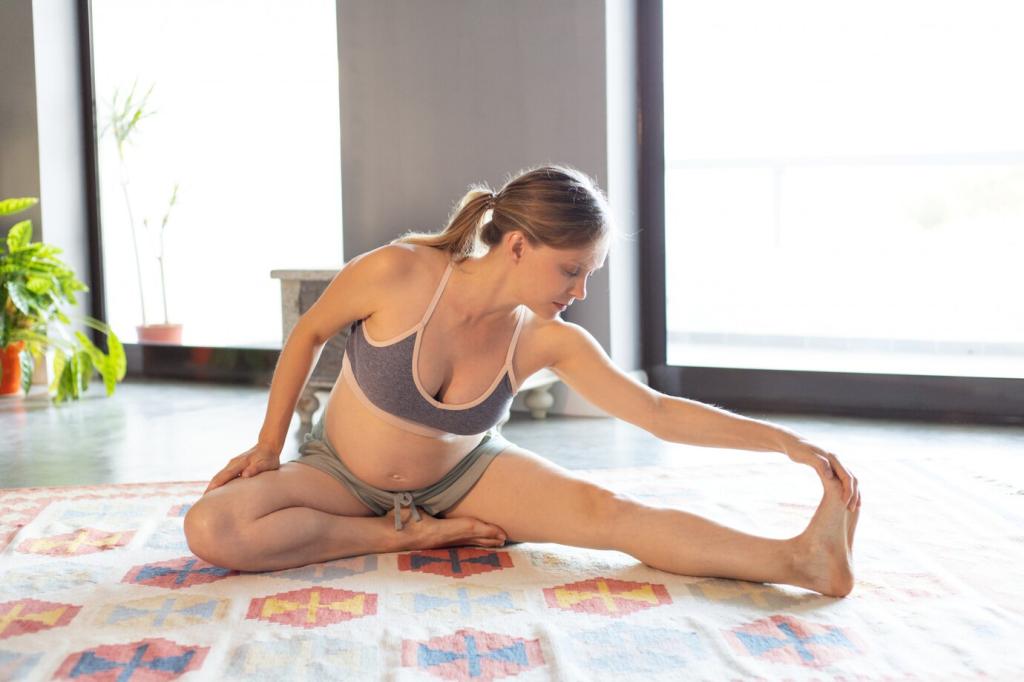
Place feet hip-width, spread toes, and root evenly through heels and balls. Soften knees, lengthen tail slightly, lift heart gently, and broaden collarbones. Let your chin level, eyes soft, and shoulders melt down your back.
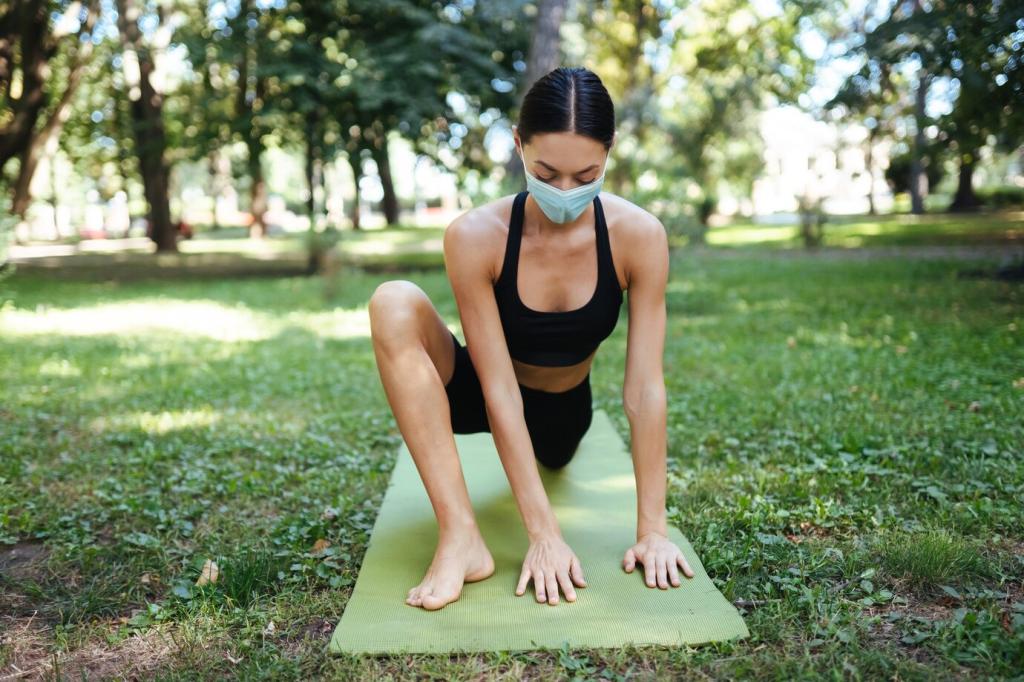
Inhale to feel height from feet to crown; exhale to settle weight evenly. Imagine breath filling the ribs like an umbrella opening. Balance becomes easier when exhalations slow, anchoring attention into the body’s subtle signals.
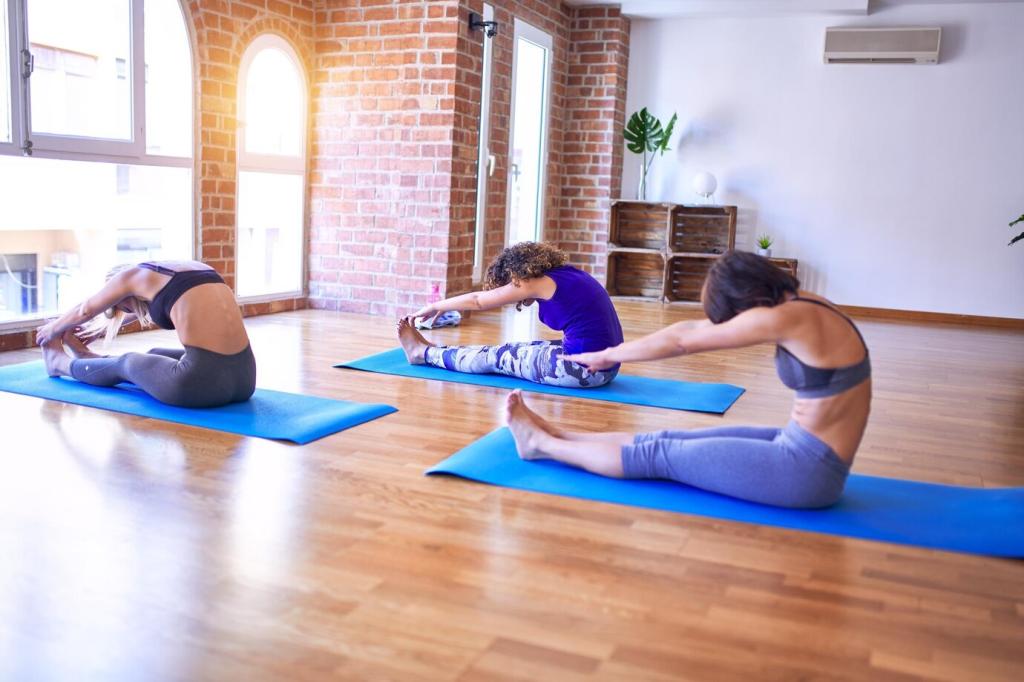
A reader once practiced Mountain while waiting for an elevator, simply softening knees and lifting through the crown. Two weeks later, her lower back stopped nagging during commutes. Gentle posture work quietly changed her whole morning.
How to Move without Strain
Stack shoulders over wrists and hips over knees. Inhale, lift tail and heart for Cow; exhale, round from tail to head for Cat. Keep movements small, pain-free, and silky, like waves traveling through a calm shoreline.
Desk-Back Relief Story
After long spreadsheets, I tried three slow Cat–Cow rounds before meetings. The ritual reset my mood and loosened my shoulders. Colleagues noticed I spoke softer, clearer, and smiled more. Gentle movement changed the tone of conversations.
Breath Timing for Calm
Match inhales with gentle opening and exhales with soft rounding. That pairing signals safety to your nervous system, easing tension in the jaw and belly. The slower you breathe, the more your spine learns to unwind.
Child’s Pose (Balasana): Rest that Restores
Place a folded blanket under knees, a pillow between calves and thighs, or a bolster beneath your chest. These small comforts make longer, deeper rest possible, encouraging the back to release without tugging on hips or ankles.
Child’s Pose (Balasana): Rest that Restores
For many beginners, pausing feels harder than pushing. Child’s Pose teaches you to trust stillness as an action. Each exhale signals permission to soften, letting your body learn recovery, resilience, and compassionate pacing from the inside.
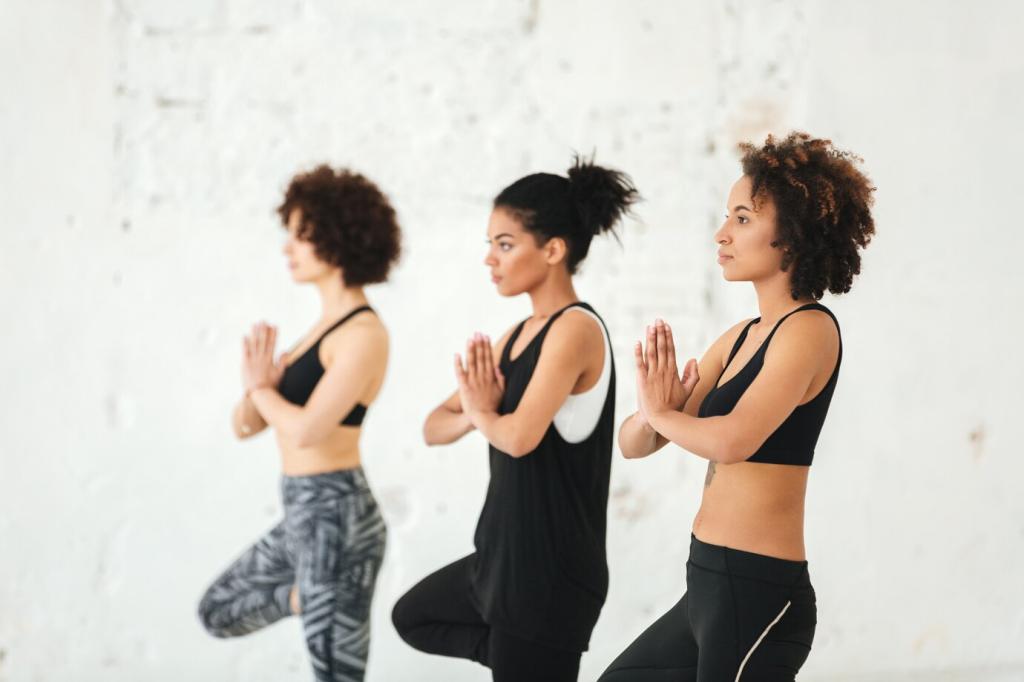
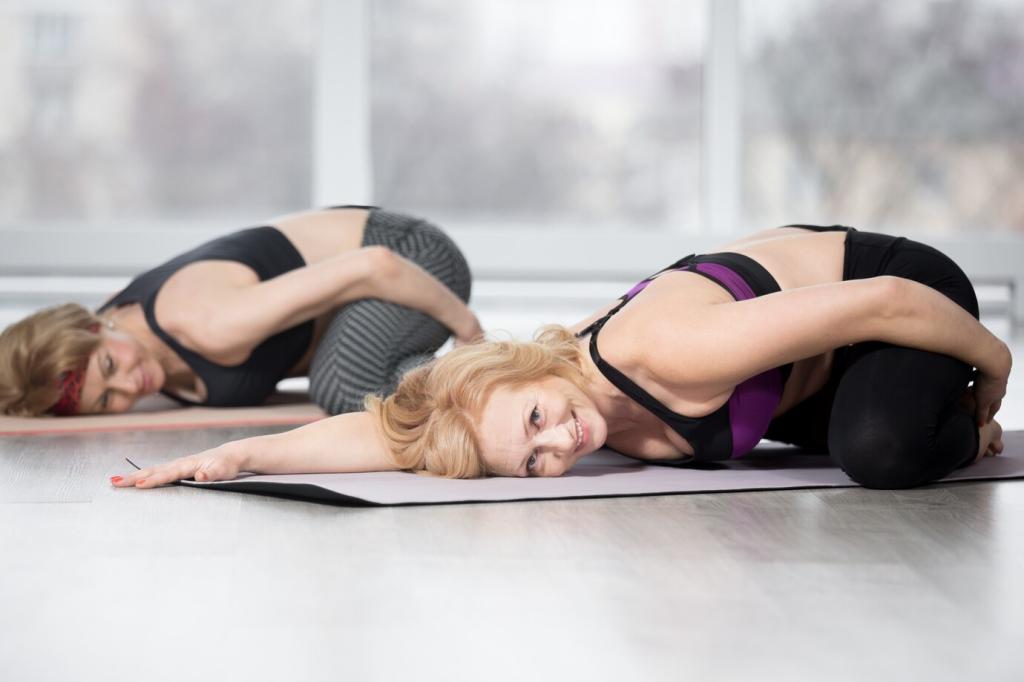
Supported Bridge: Soft Strength and Spacious Breath
Setting Up with a Block or Pillow
Lie on your back, bend knees, and place a block or firm pillow under the sacrum, not the low back. Rest the weight fully, broaden collarbones, and imagine breath expanding sideways into the ribs like lantern light.
Contraindications and Gentle Alternatives
If you experience low-back discomfort, try a lower support or switch to Constructive Rest with feet wider and knees touching. Always prioritize pain-free range. Gentle yoga honors sensation, never forcing shapes your body cannot yet welcome.
Feeling the Heart Expand
Many beginners report a subtle mood lift here. With the chest open and breath deepening, shoulders release held tension. Stay two minutes, then lower slowly. Notice the afterglow as warmth spreads across the front body and throat.
Seated Side Stretch: Make Space for Your Breath
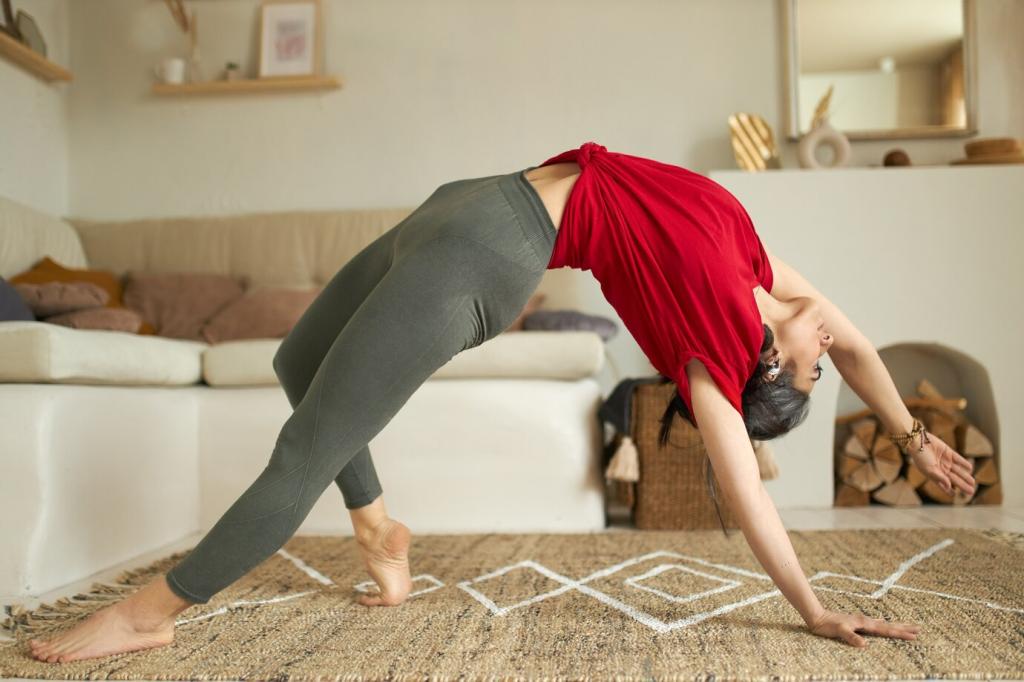
Sit tall on a cushion, root through sits bones, then reach up to lengthen before leaning sideways. Think space first, curve second. That order protects the low back and invites an expansive, buoyant feeling through your ribs.
